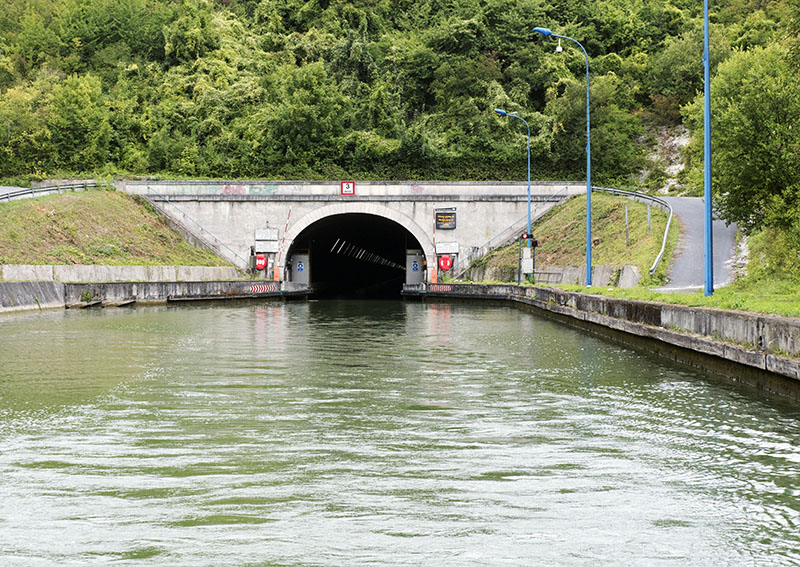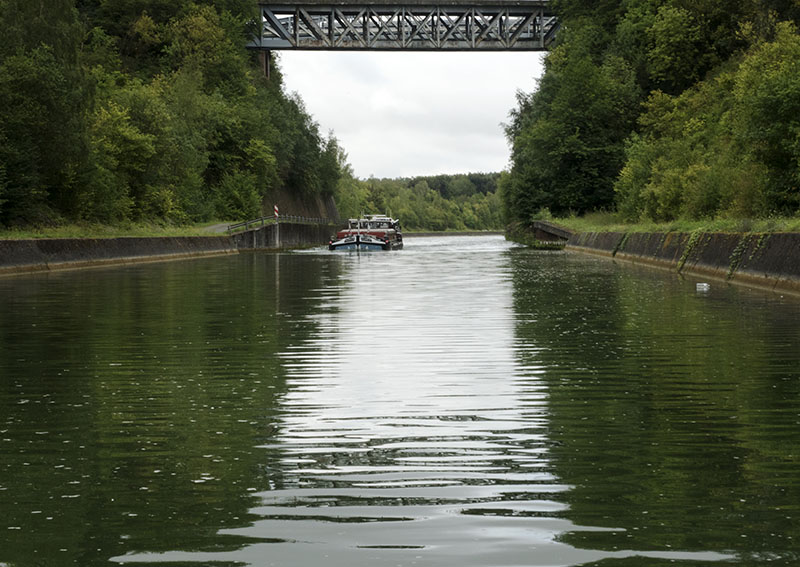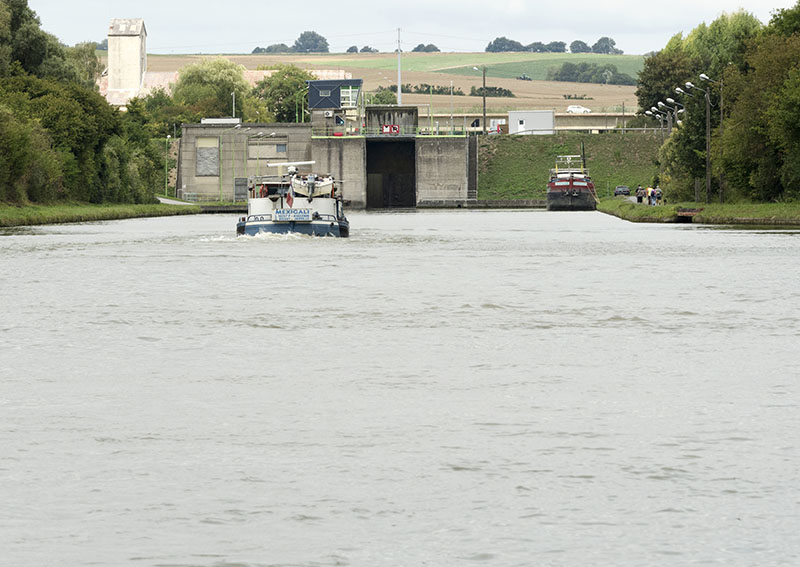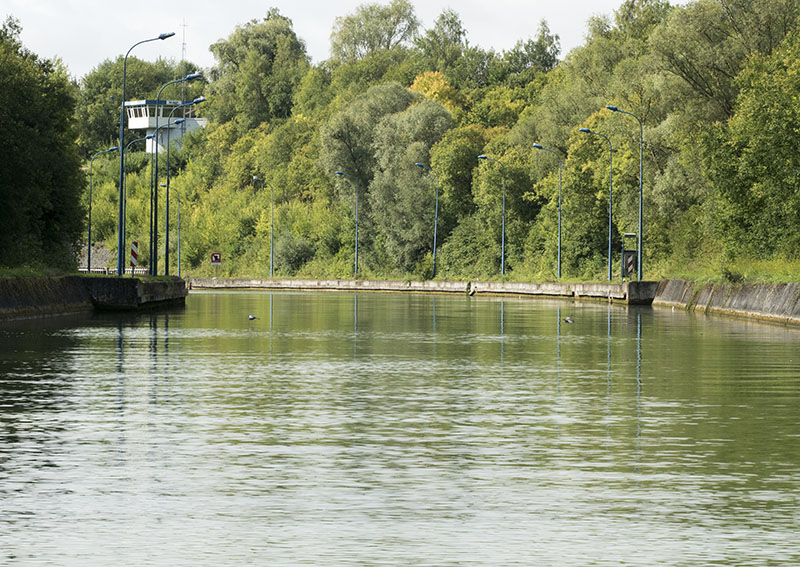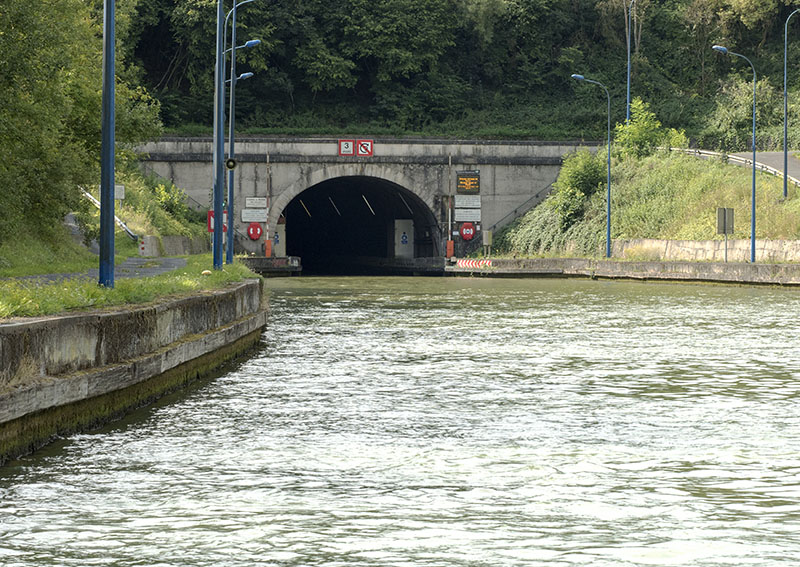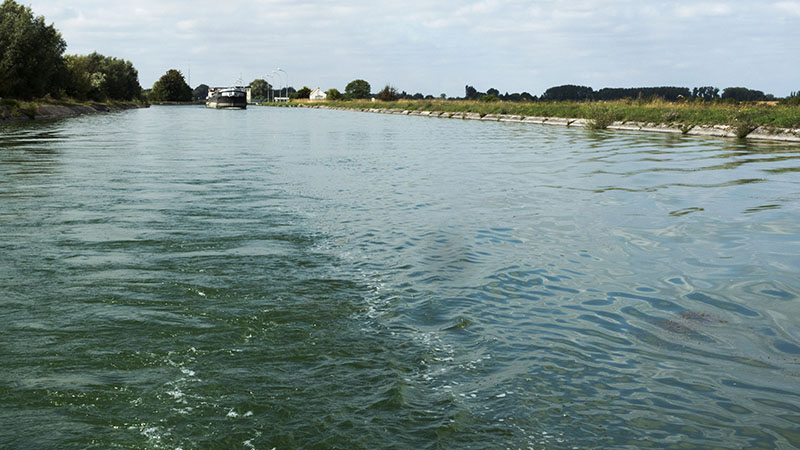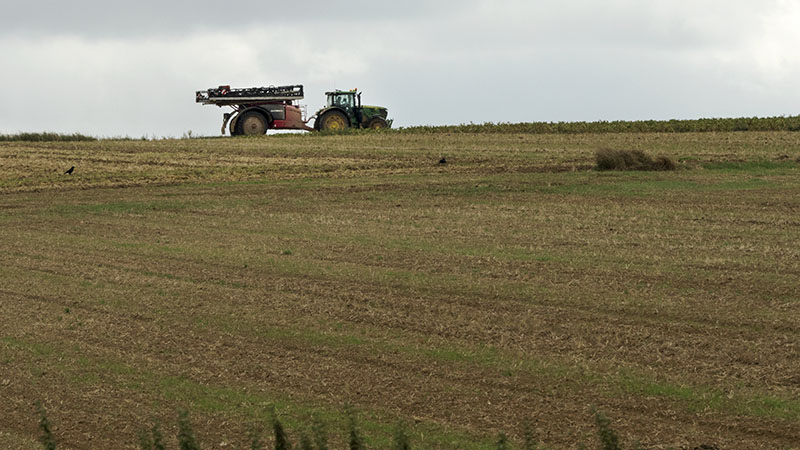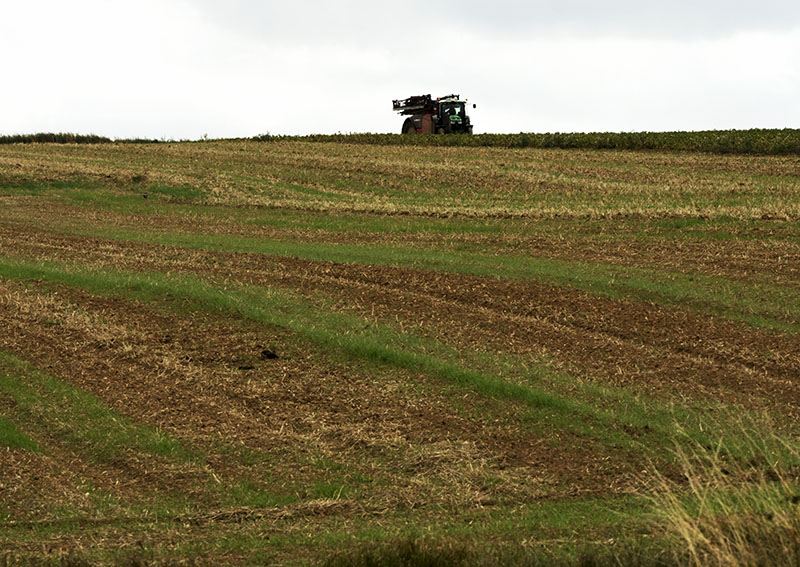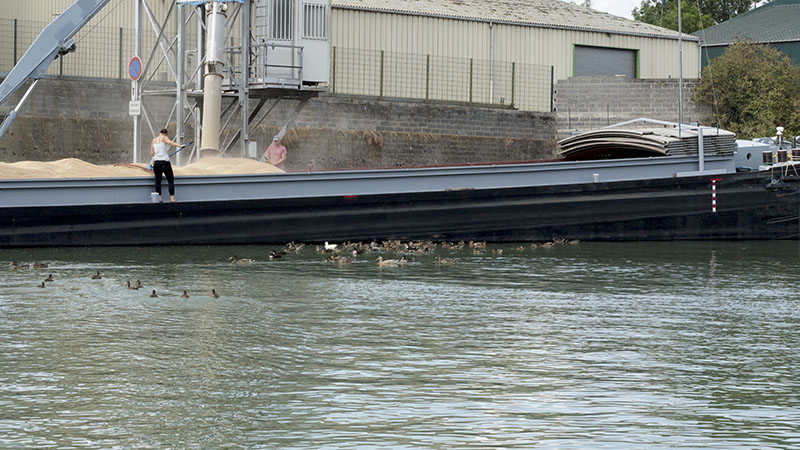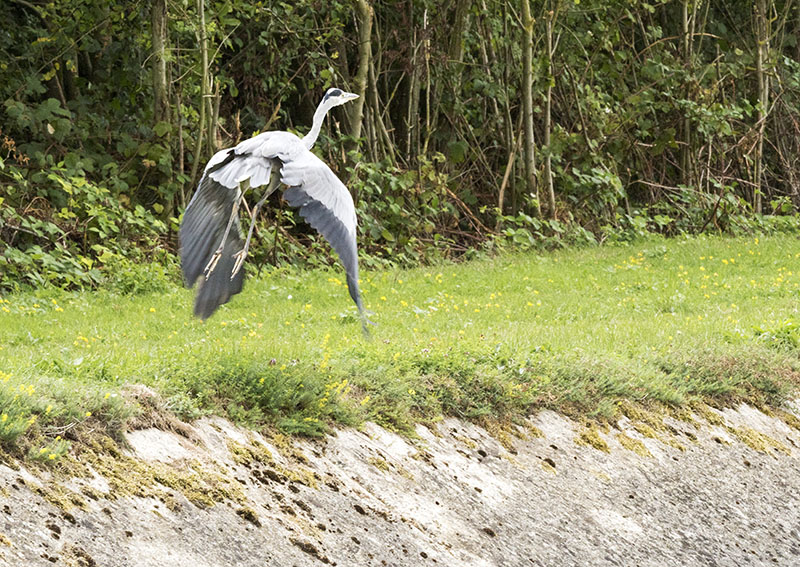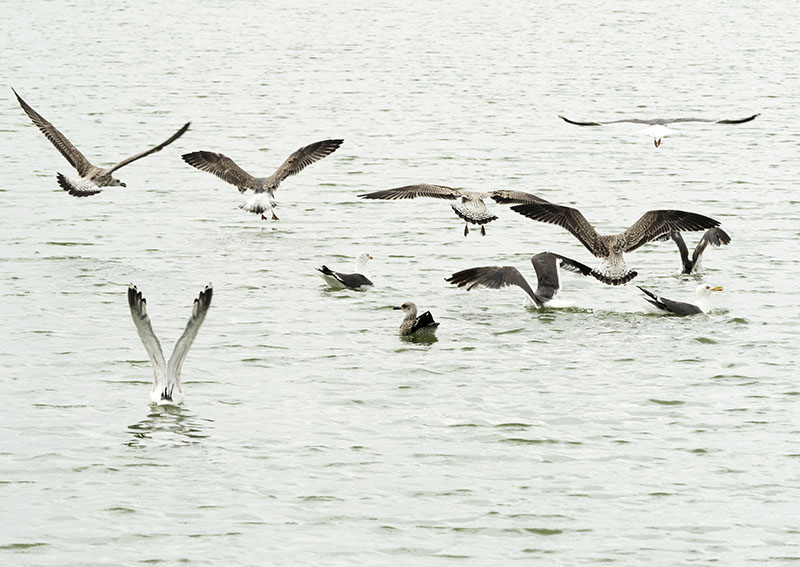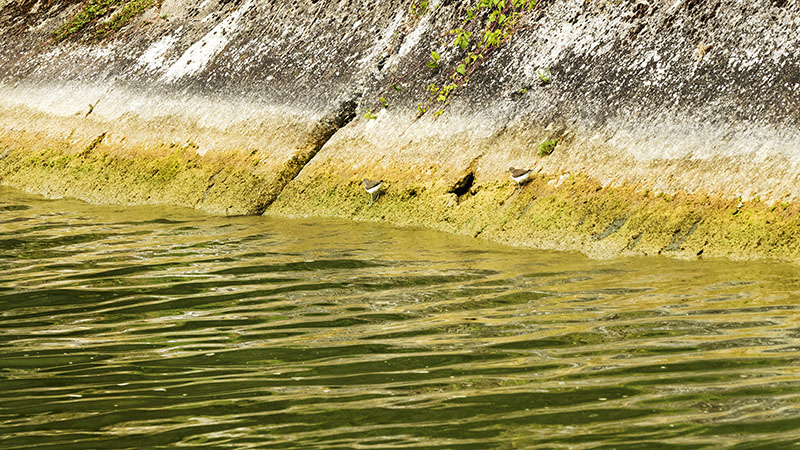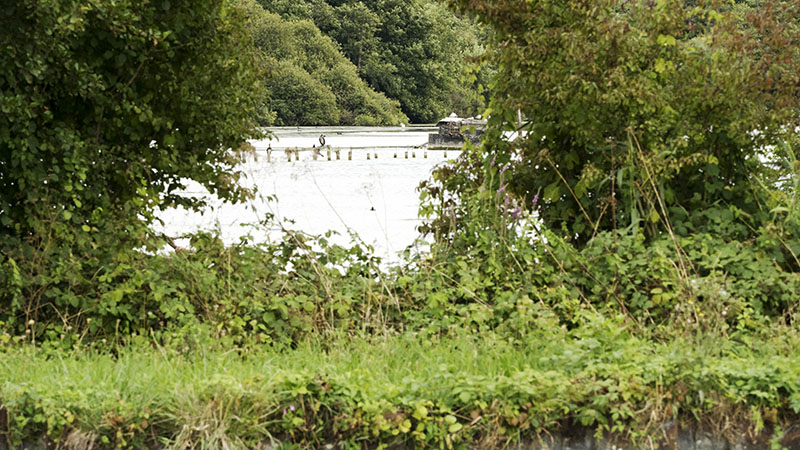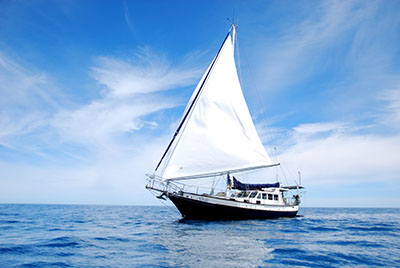First thing this morning, Bob went through all of the engine system checking for blockages and found nought. This left only one other scenario causing the engine to cut out: the muffler.
Believing new parts would be required to solve the problem, we continued on our way, taking care to keep the revs below 2000.
With only five locks
one tunnel, Ruyaulcourt, almost 4.5km in length
and no more hiccups: although slow, this was an easy day of passage
through more exquisitely peaceful countryside,
with occasional industry,
and plenty of bird life.
What a feat the Ruyaulcourt tunnel was. Just over four kilometres in length, it led us through the mountainside. Well lit, it was plenty wide enough for Gratis and being well lit on both sides made for easy passage. The tunnel itself, is divided into three distinct sections. The two outer consist of a single track that only allows one way traffic, whilst in the centre is a large basin that enables watercraft to pass. Lights at both entrances and in the centre section control who moves when. The beauty of this innovative structure was that it enabled traffic from both ends to enter simultaneously.
https://www.youtube.com/watch?v=0hRxLFgAzLs
Situated at the junction of Canal du Nord with the Canal de la Somme and River Somme
with its water marshland habitat is the township of Peronne: this would be our mooring for the next few days.
Looking at the peaceful landscape now covered by farms and verdant forest, it is difficult to picture the trenches, battlefield and bloody warfare that were taking place here one hundred years ago, leaving in its wake kilometres of destruction.
About Canal du Nord
- Actual work commenced on this waterway in 1908 when the parallel running Canal de Saint Quentin could no longer cater for the increased traffic demand. By the time WWI commenced, ¾ of the earthworks in addition to numerous bridges and locks had been completed.
- WWI brought work to a standstill and a full fledged effort to complete the project didn’t take place until the 1950’s when barge size significantly increased. By 1966, the canal was ready for navigation.
- With a 106km venture known as the Seine – Nord Europe Canal project well under way, Canal du Nord has only years remaining. In addition, sections of the Canal latéral à l’Oise and Oise that are currently used for river travel are also being also be replaced. When completed (approx. 2023), the new waterway will connect the Seine/Rhine basins.
